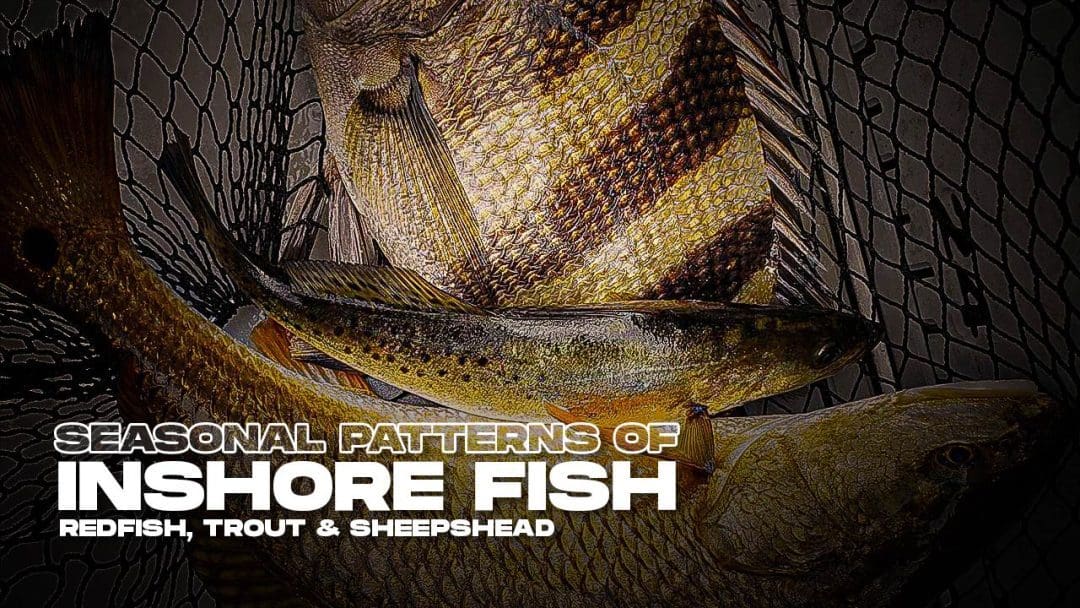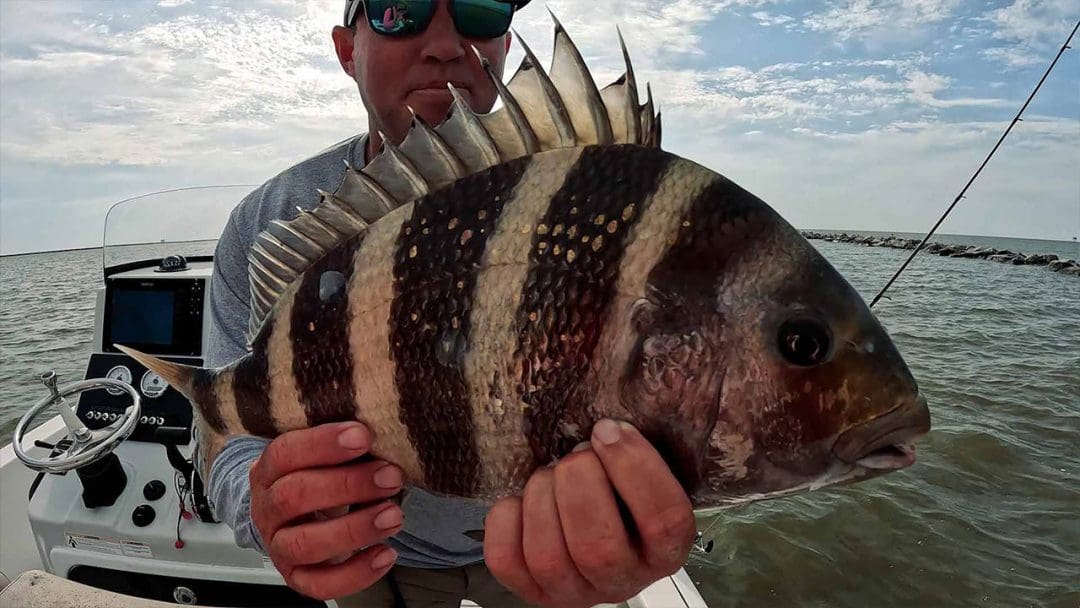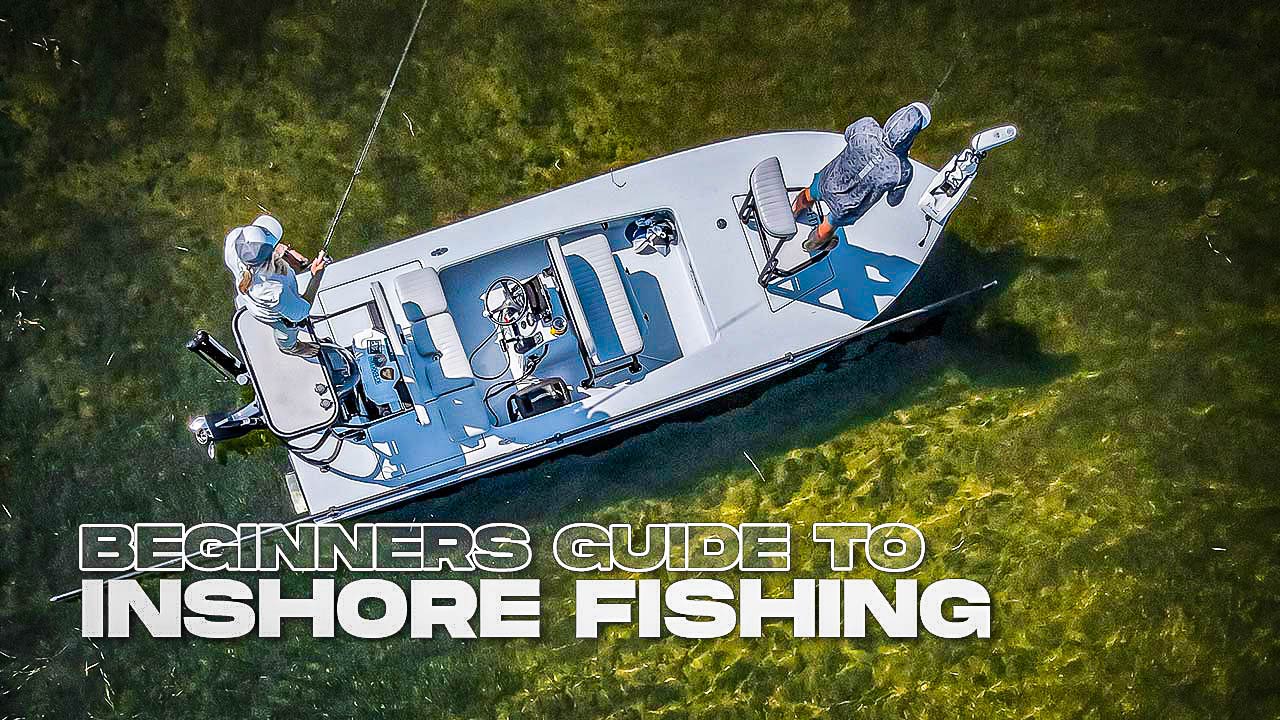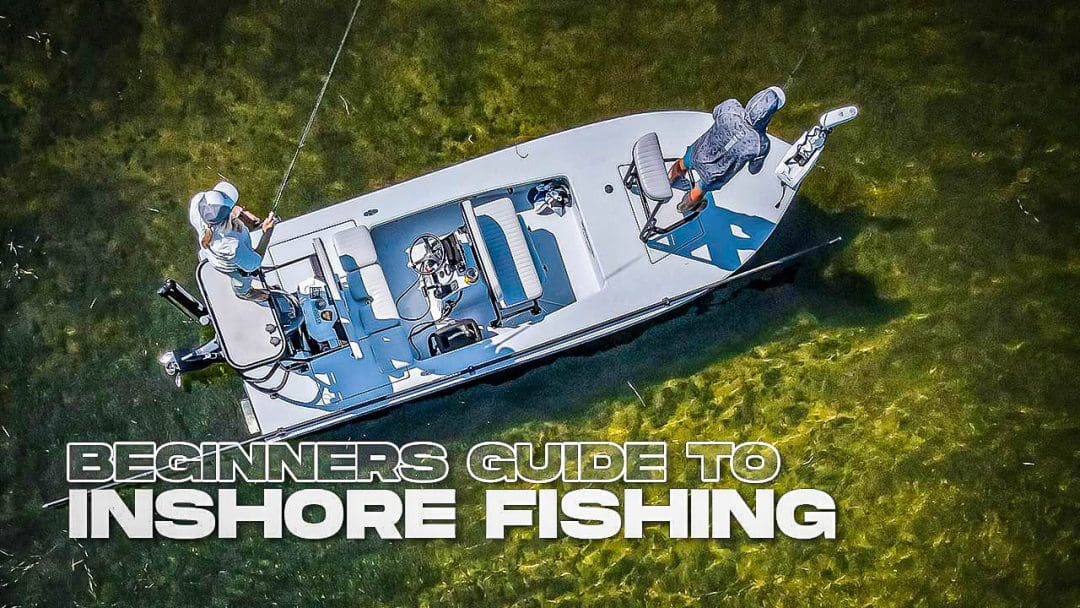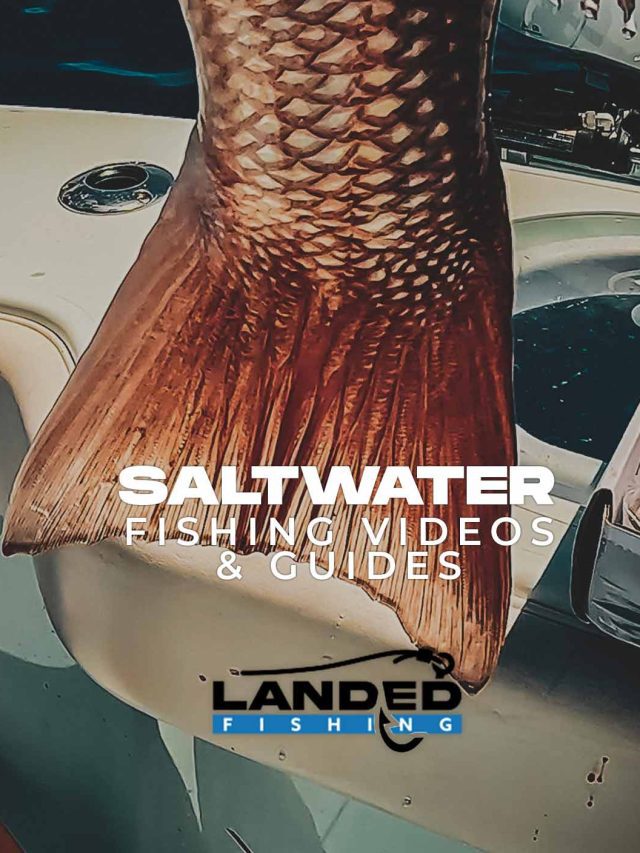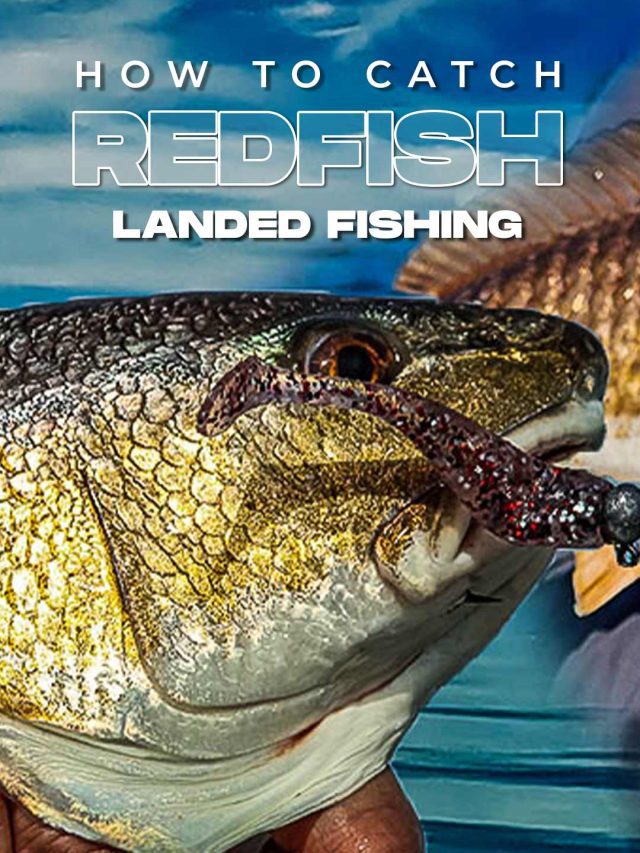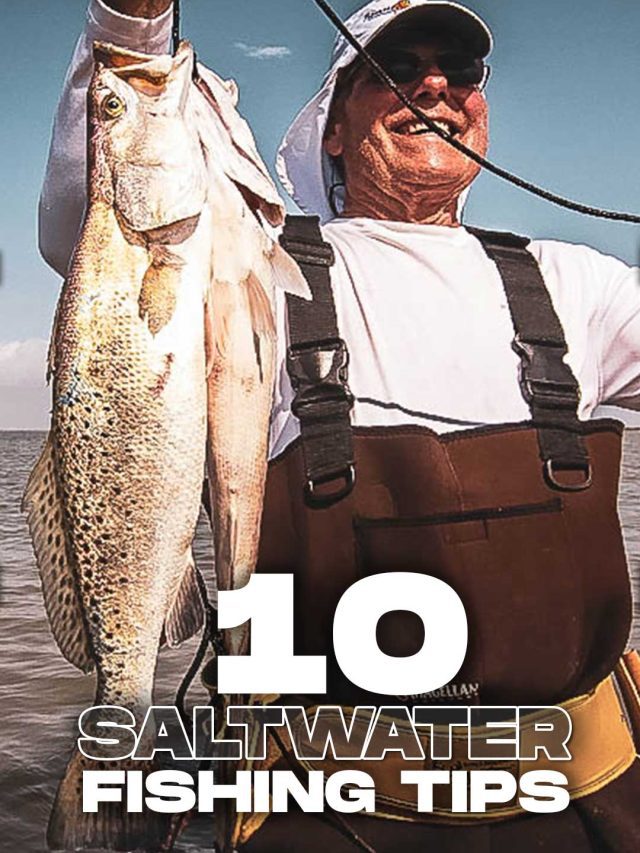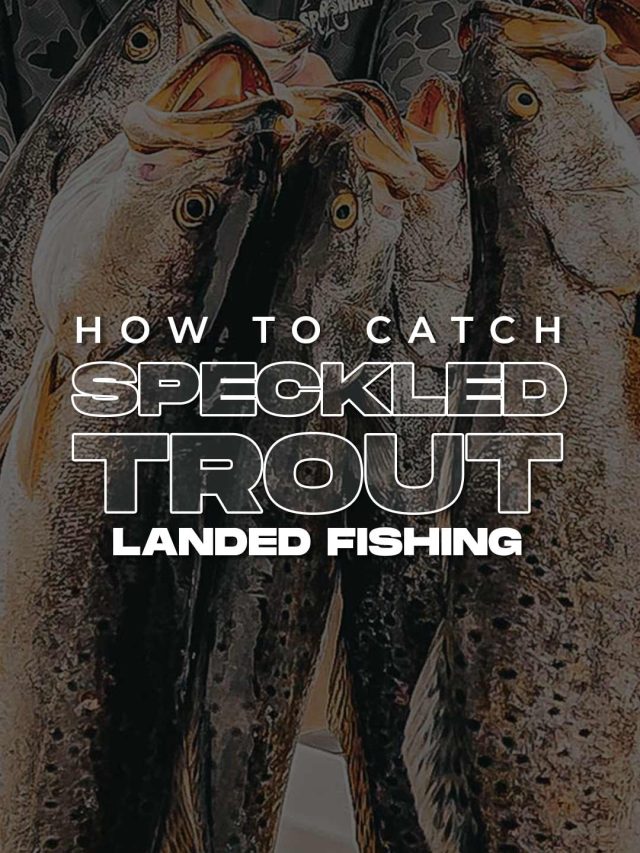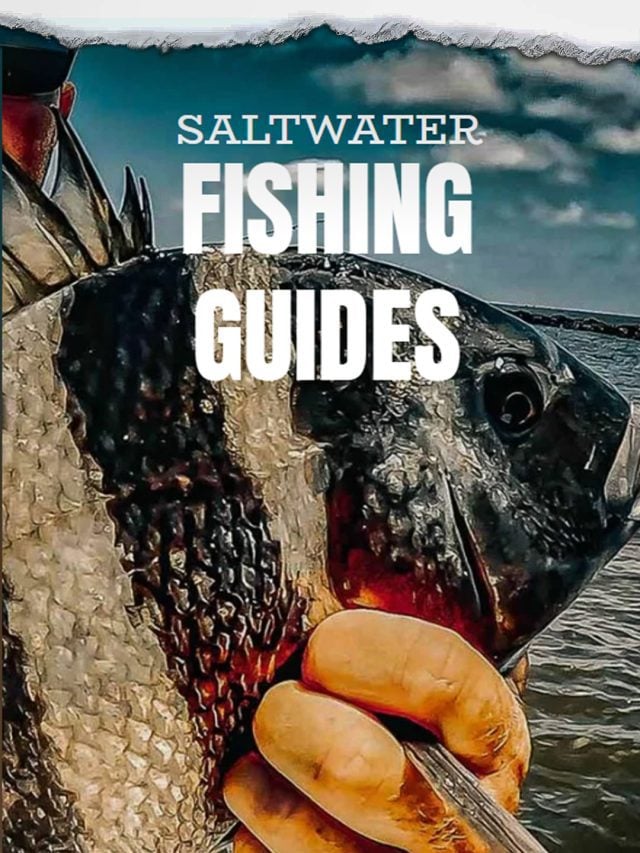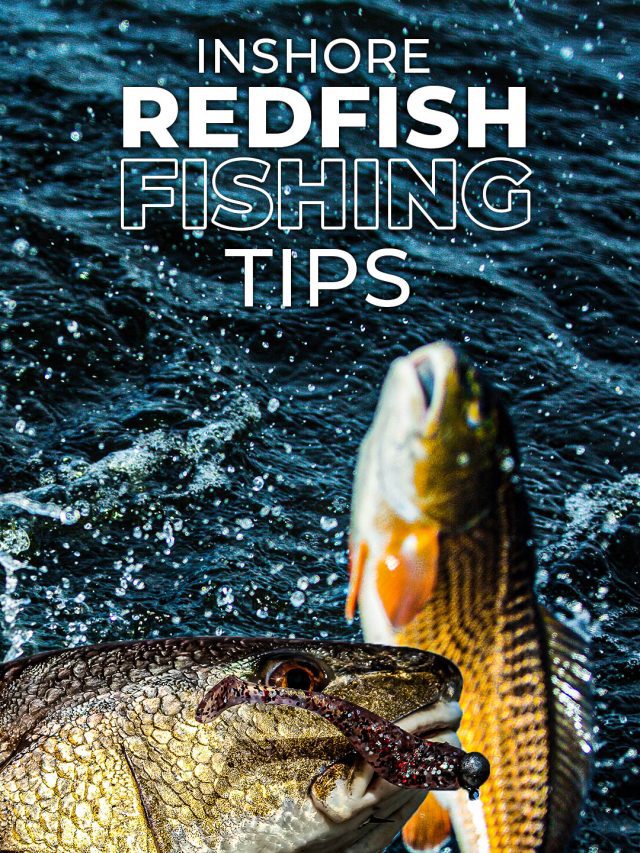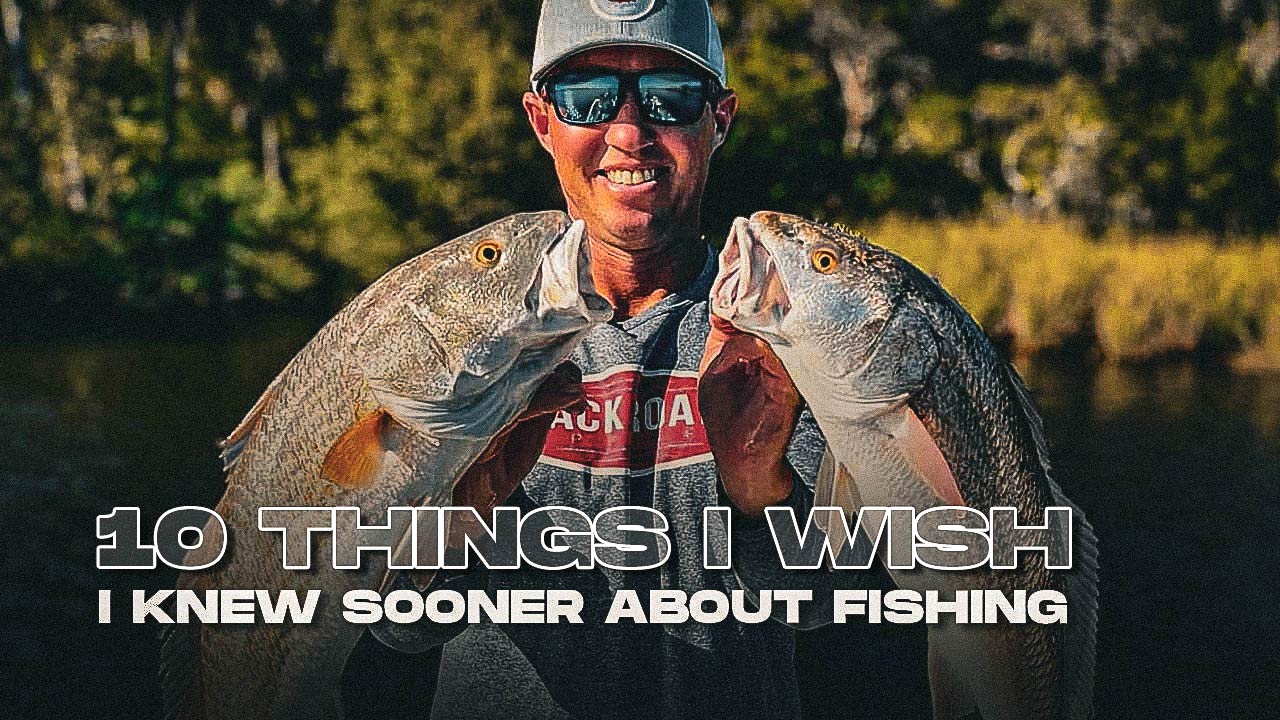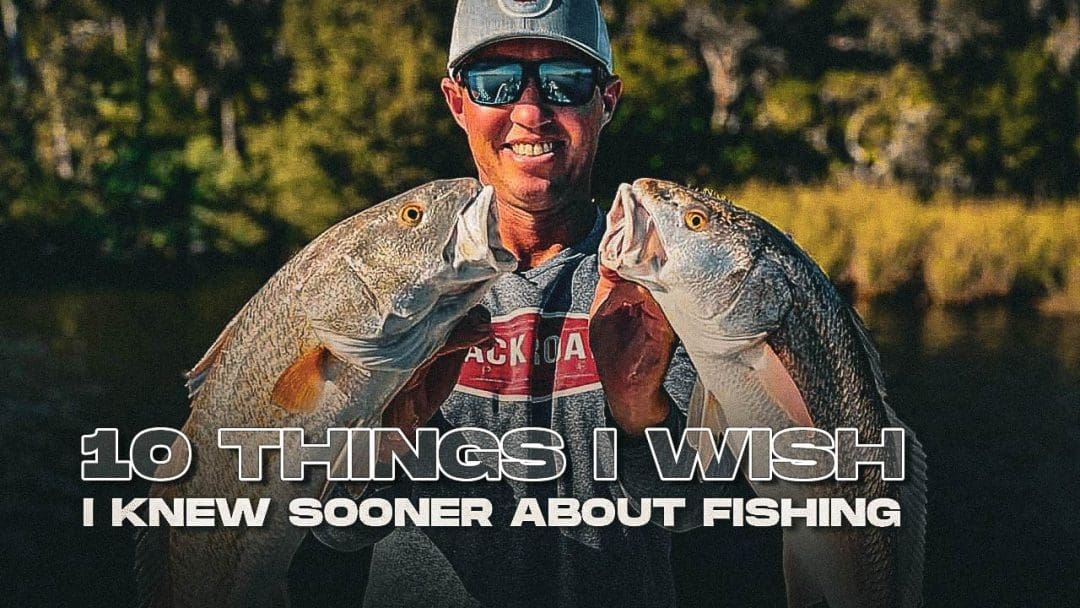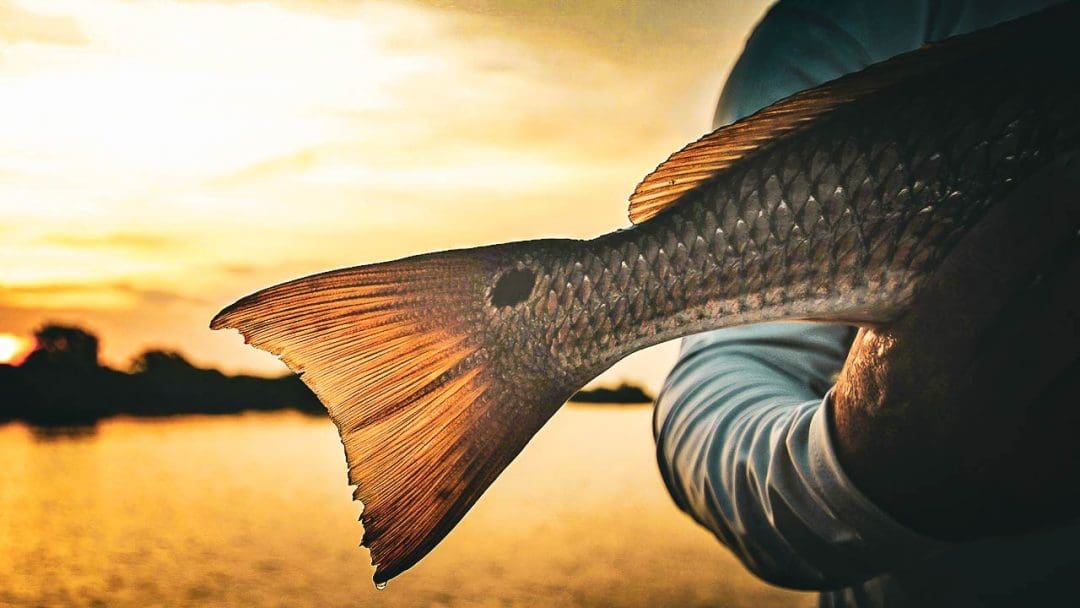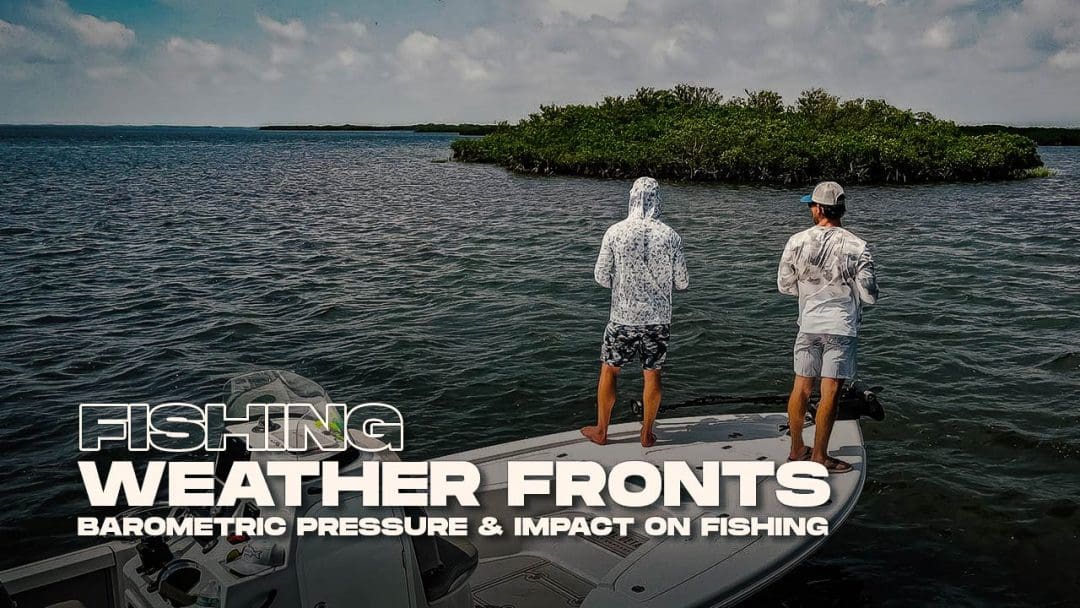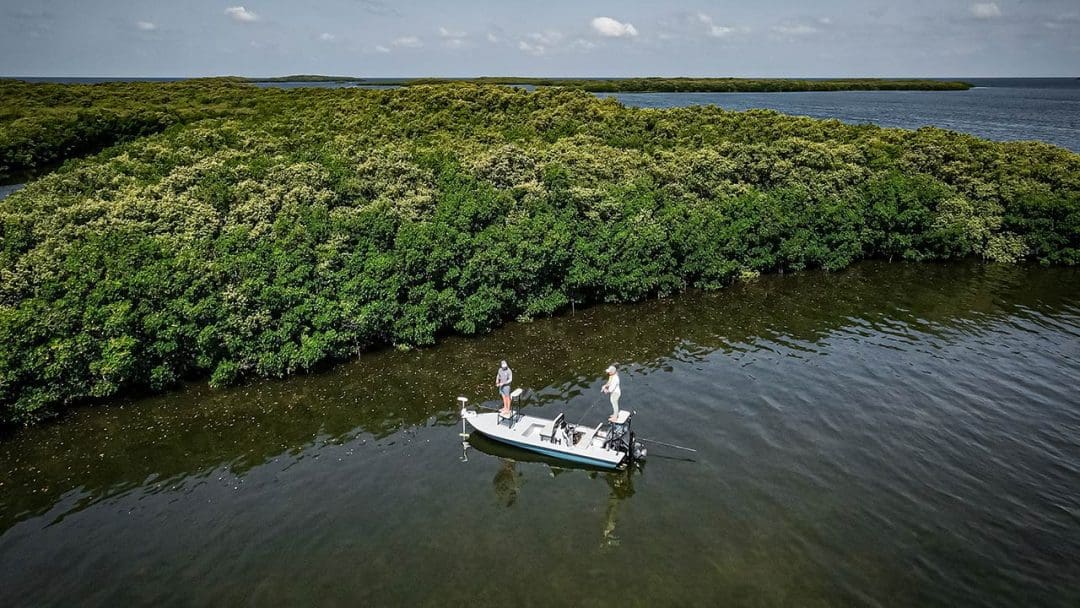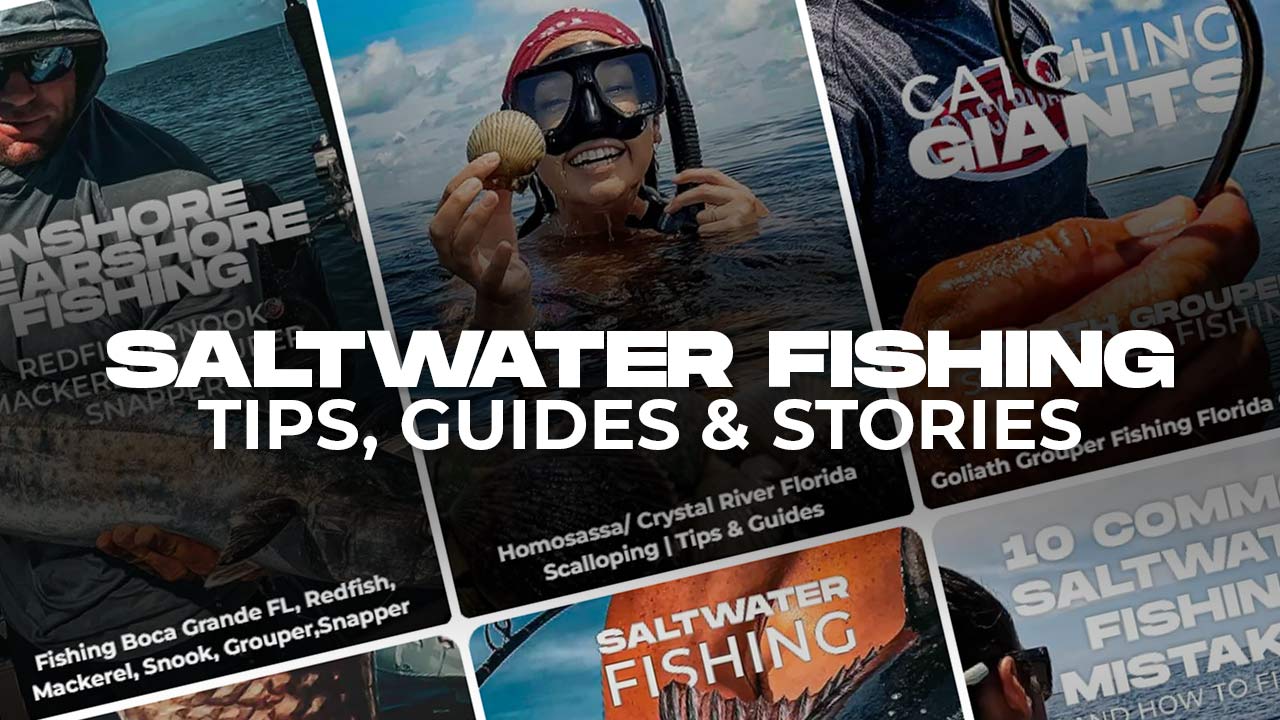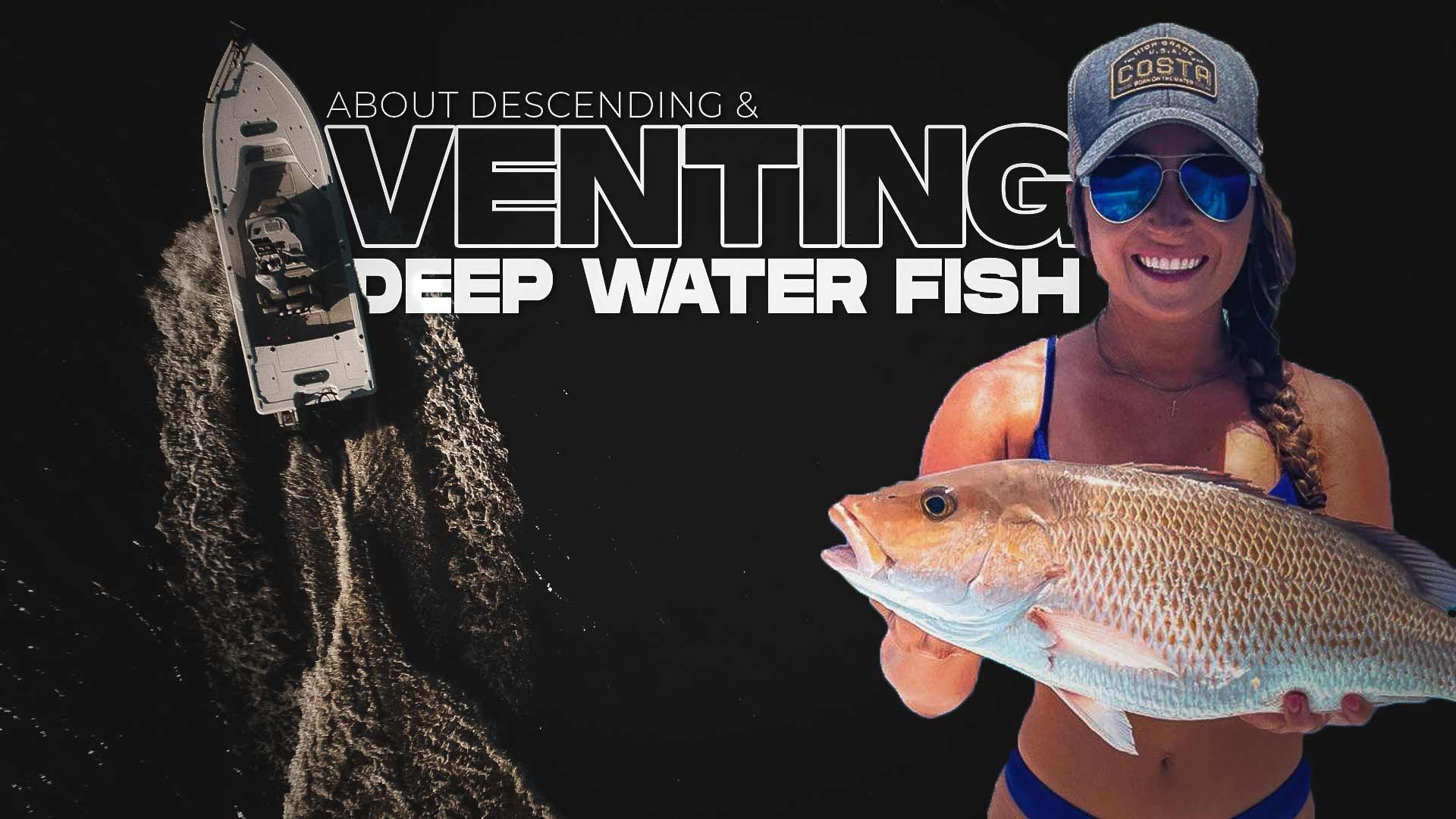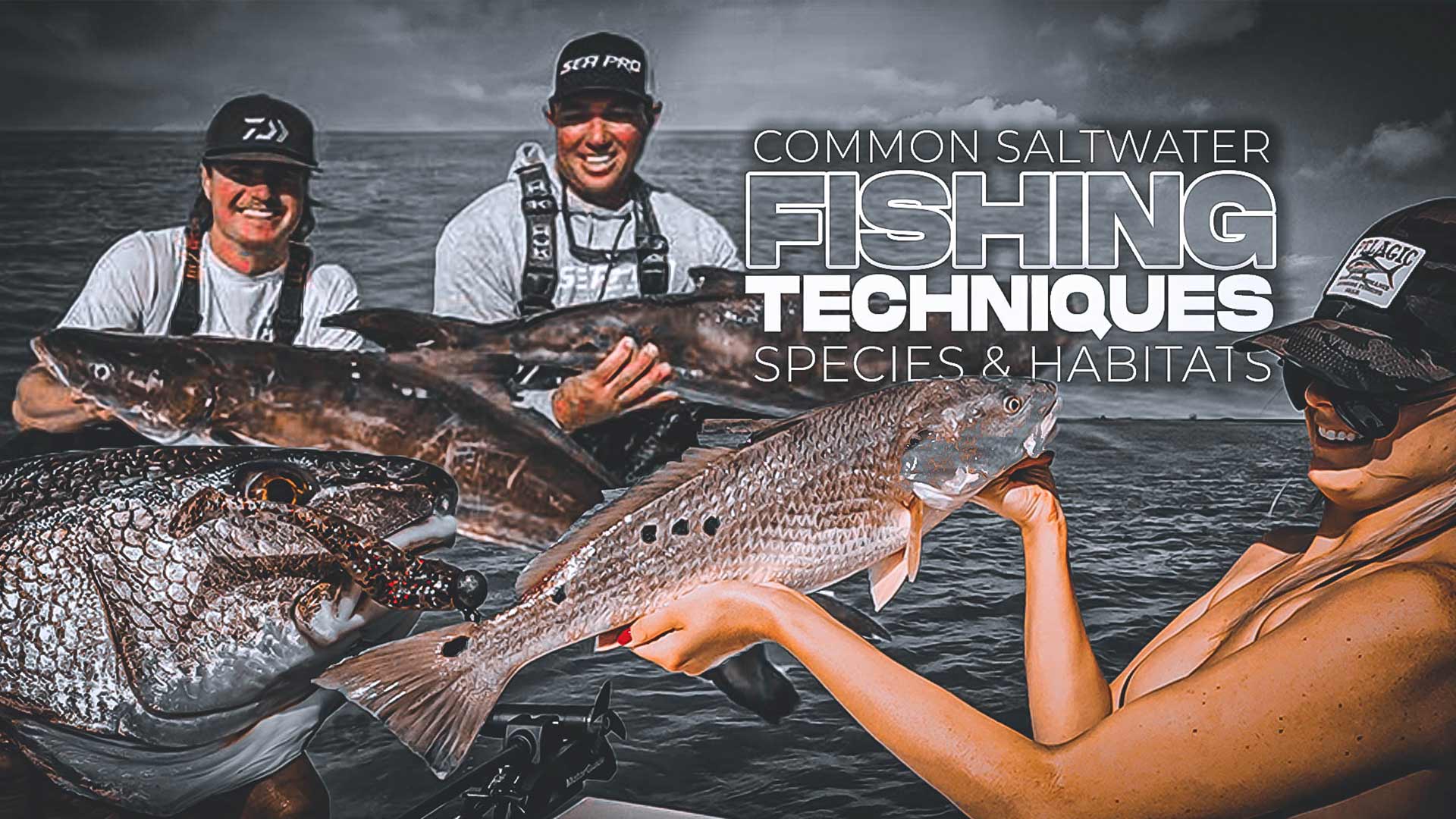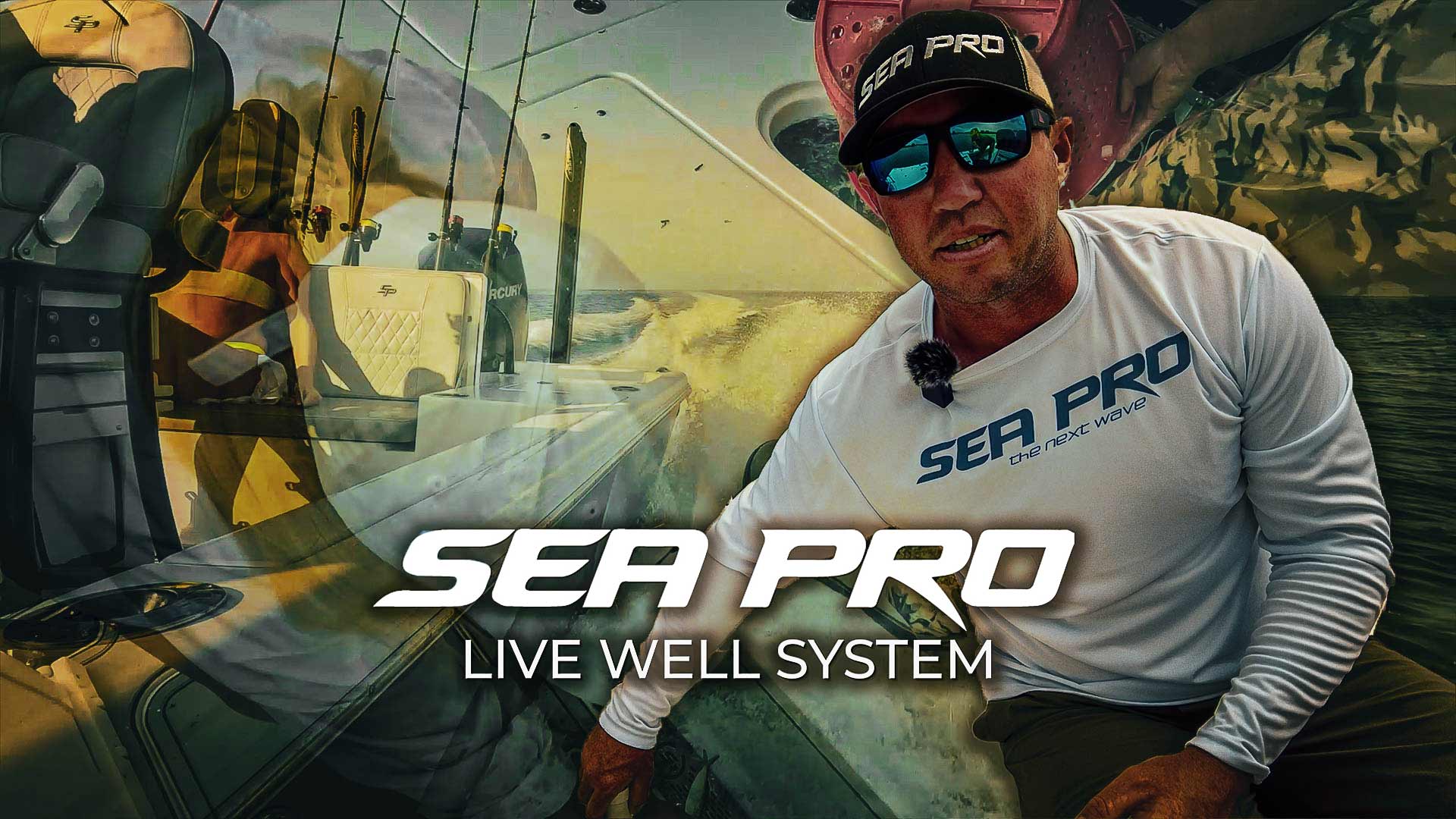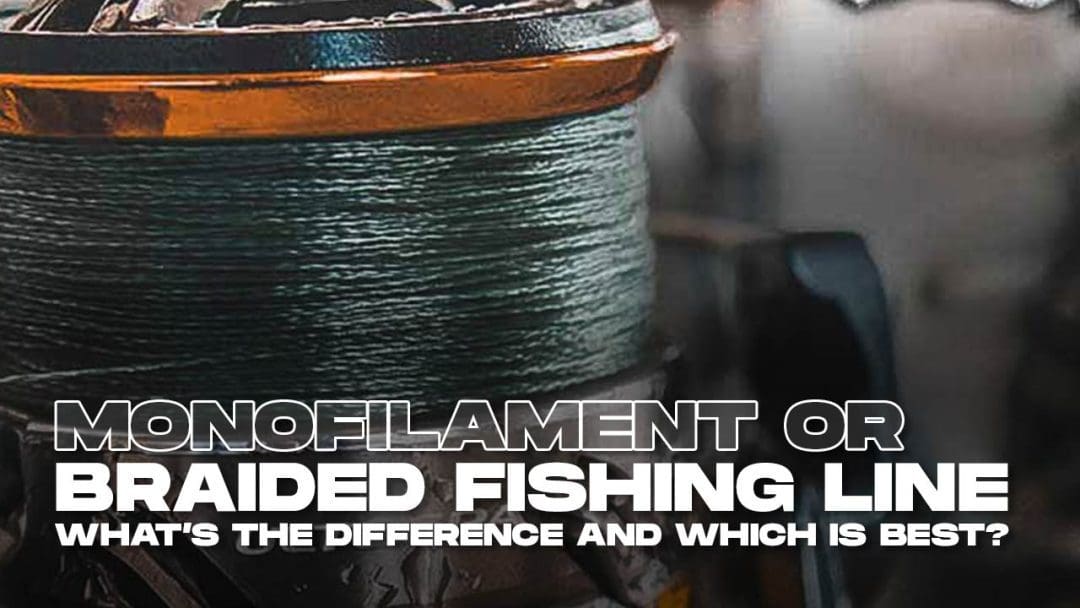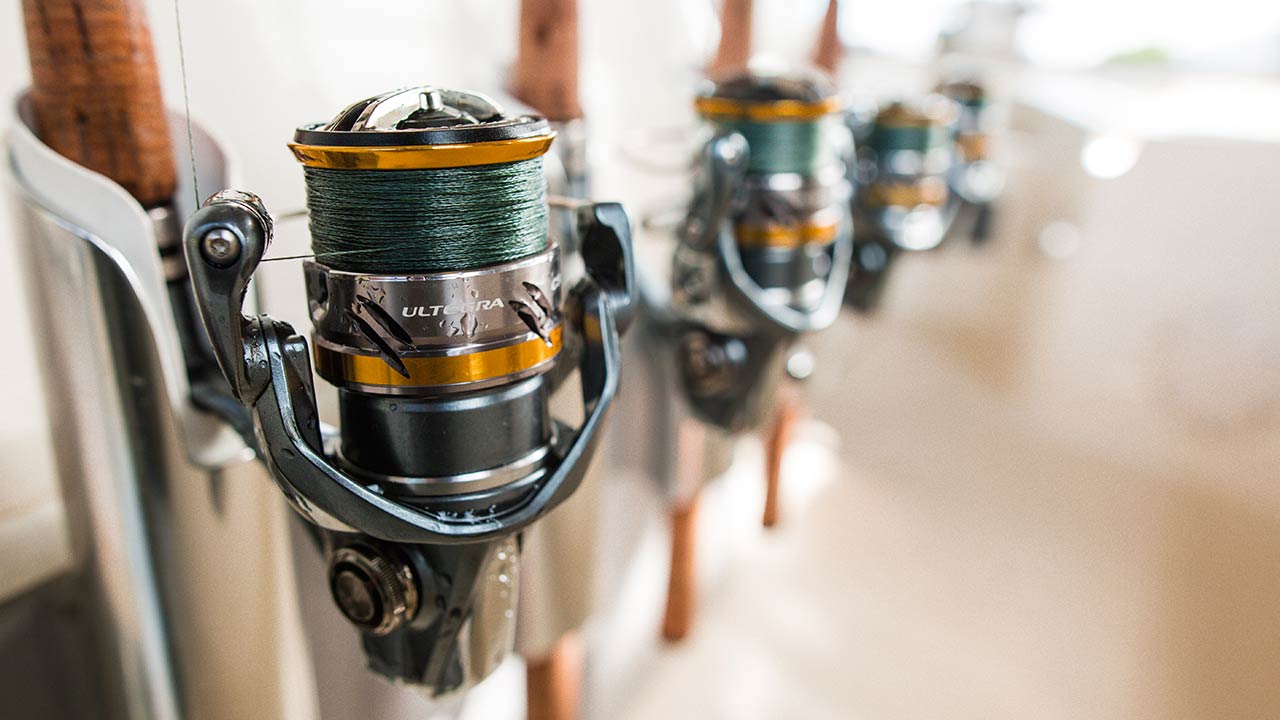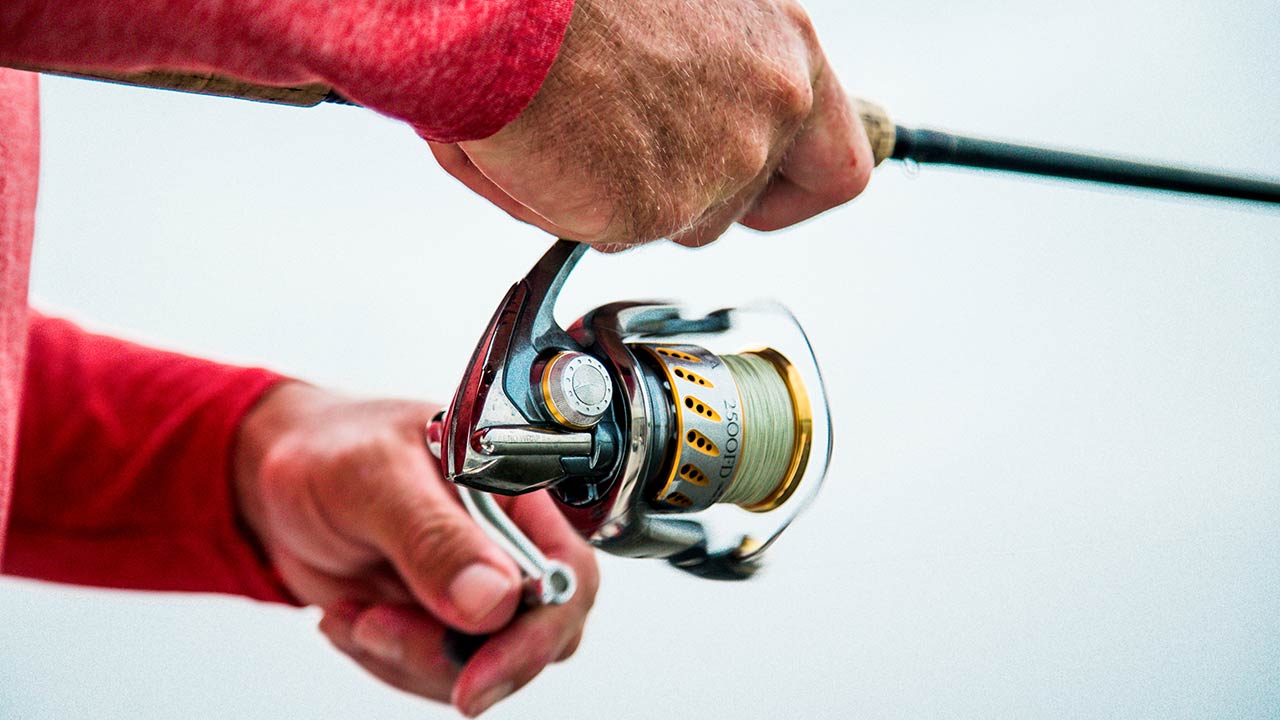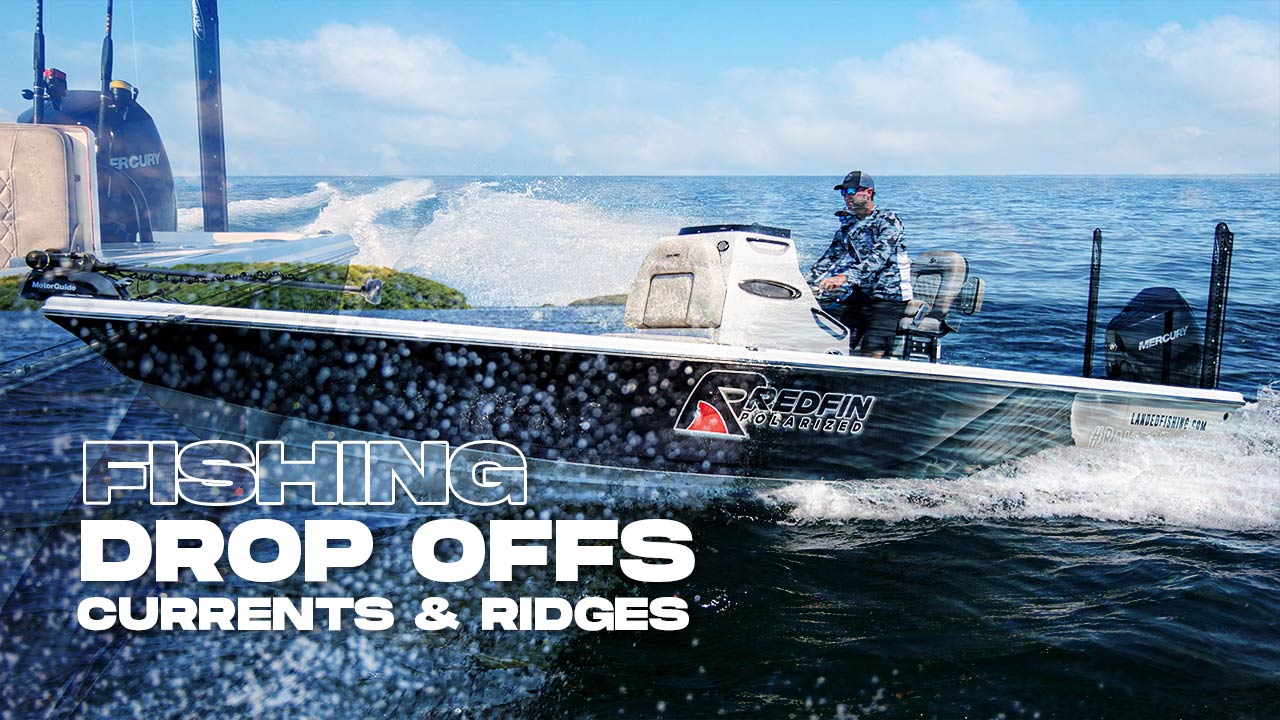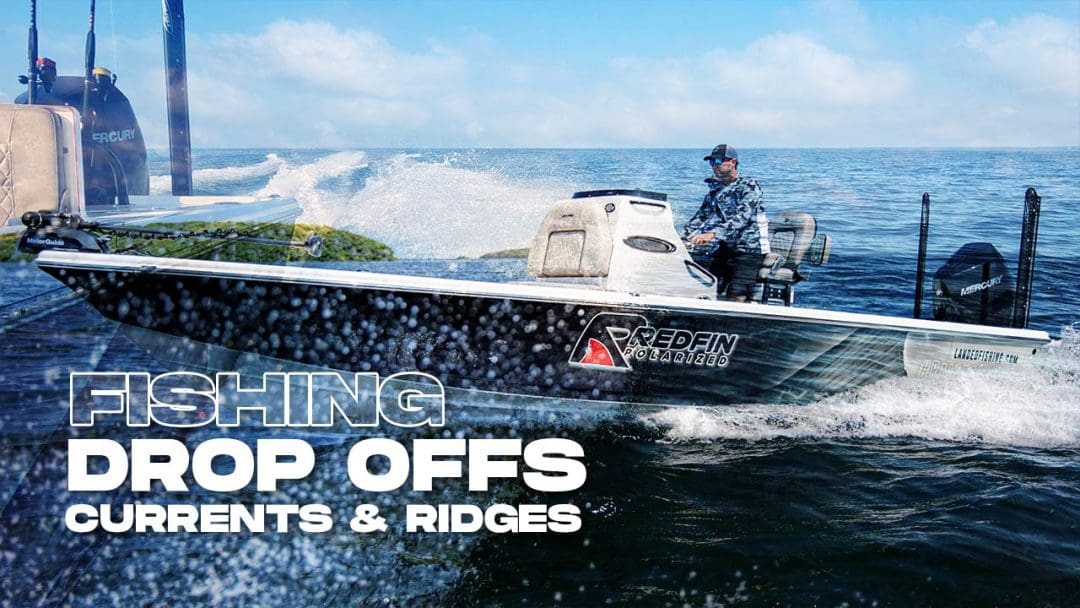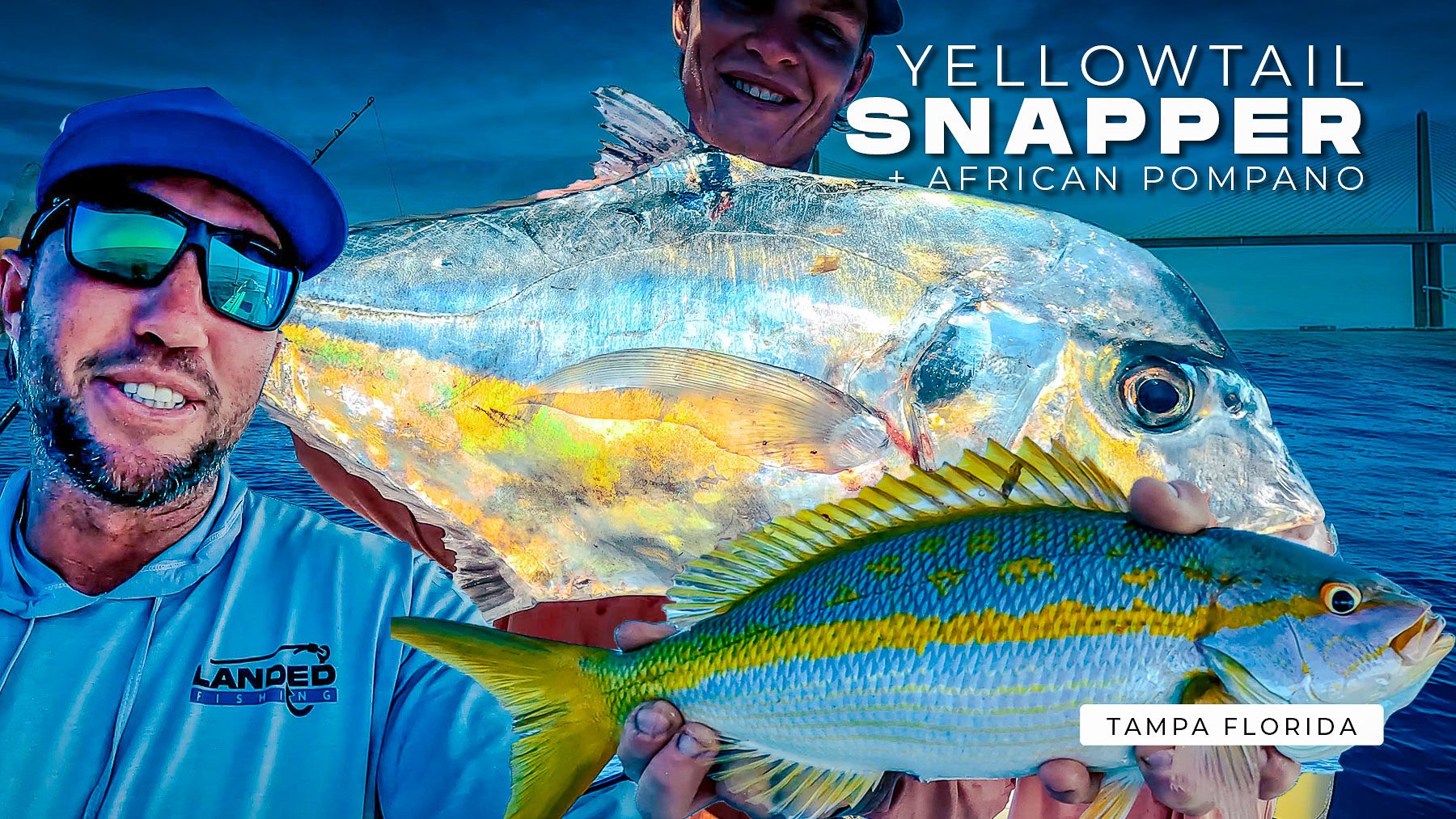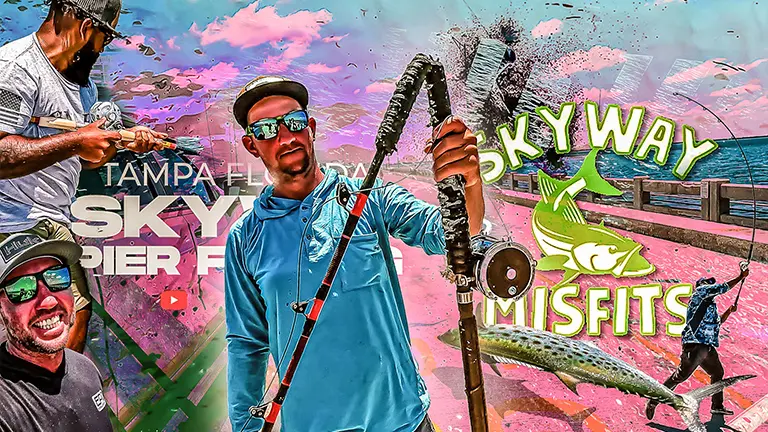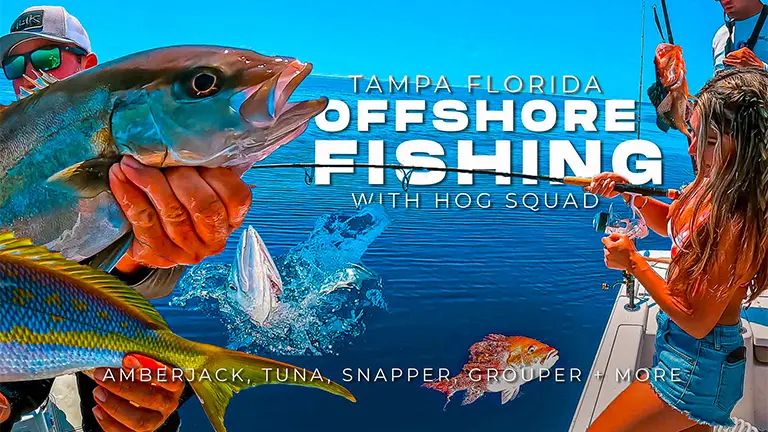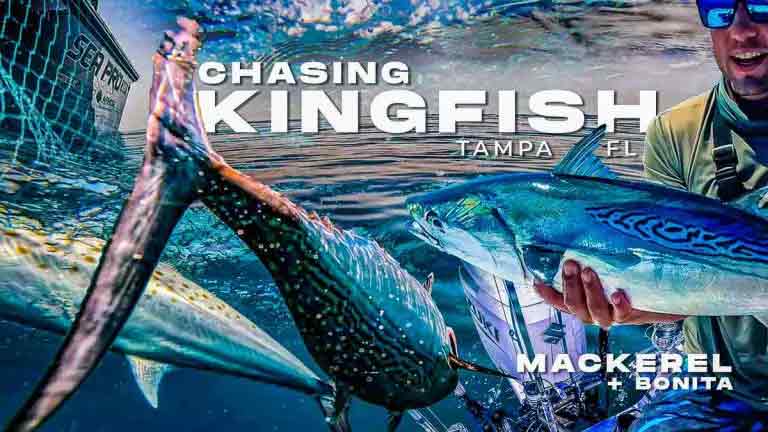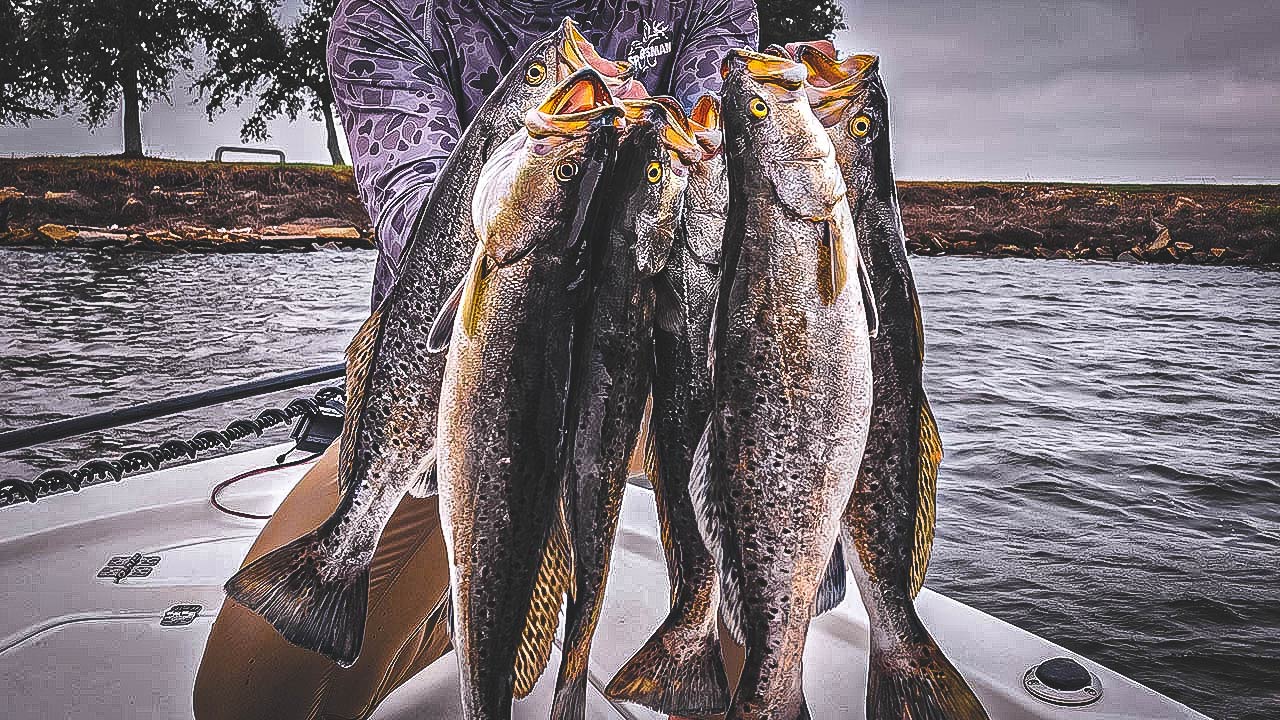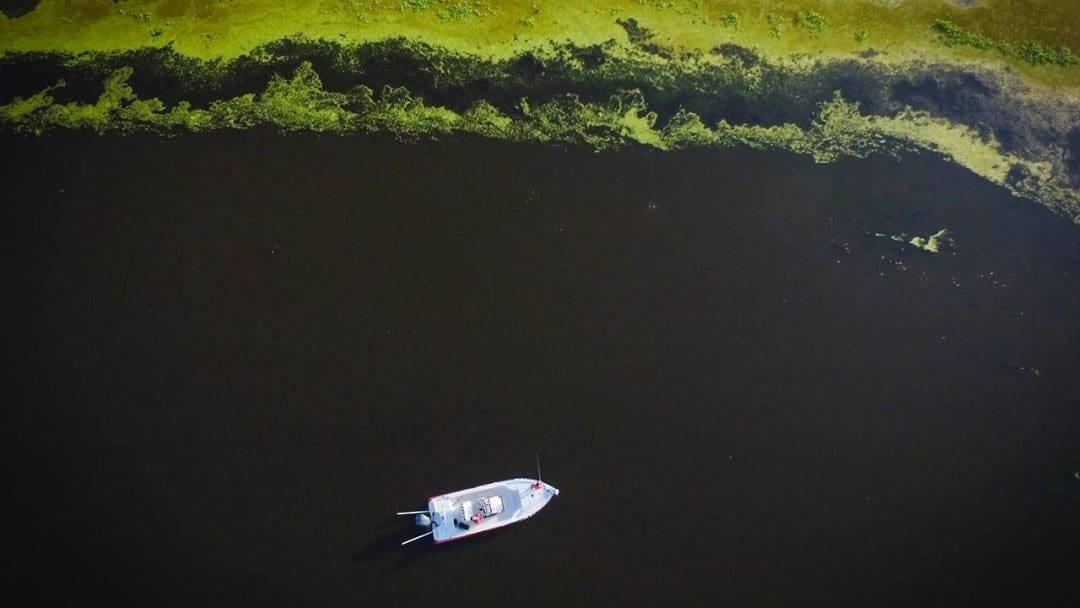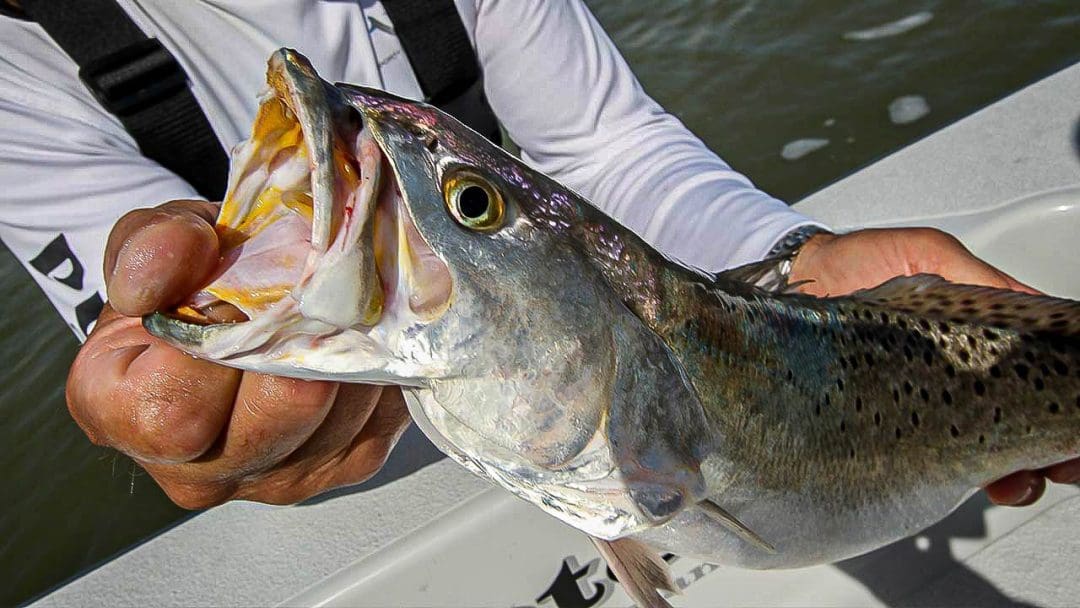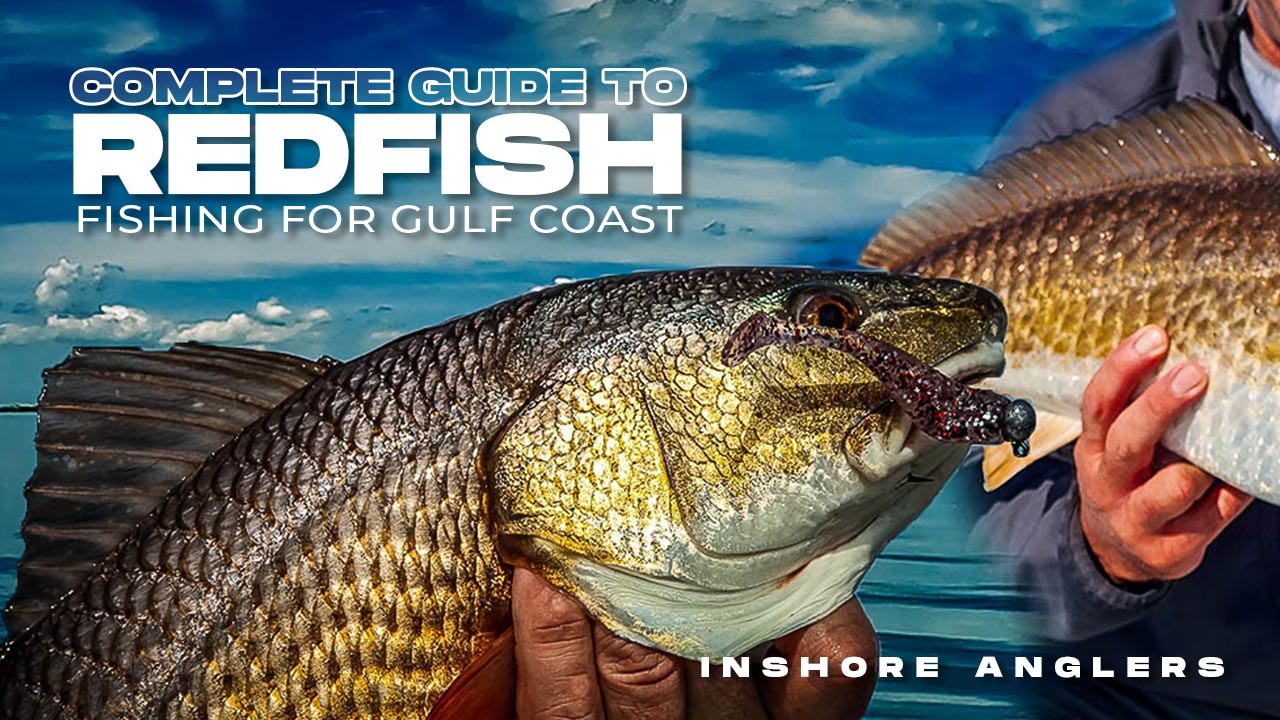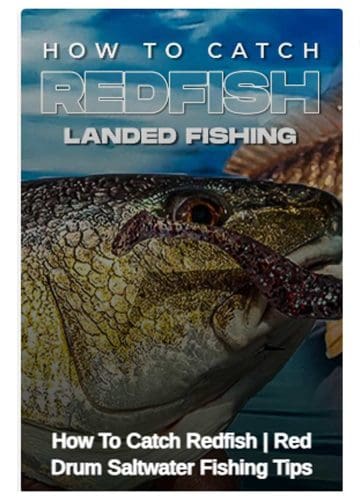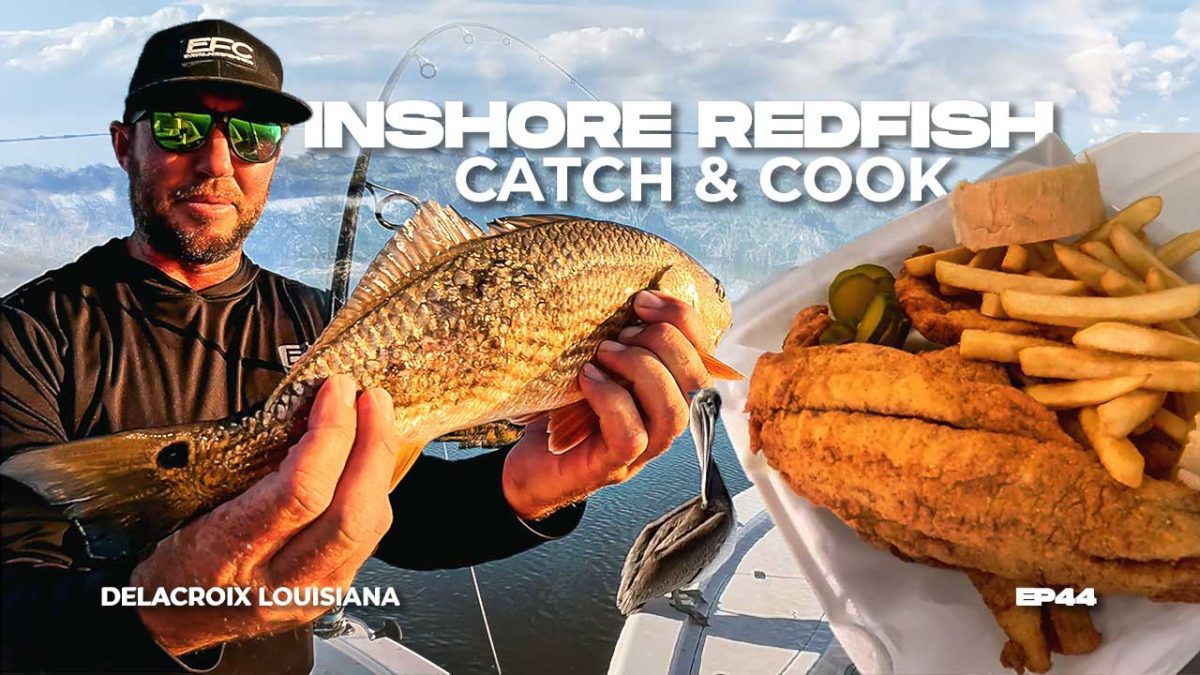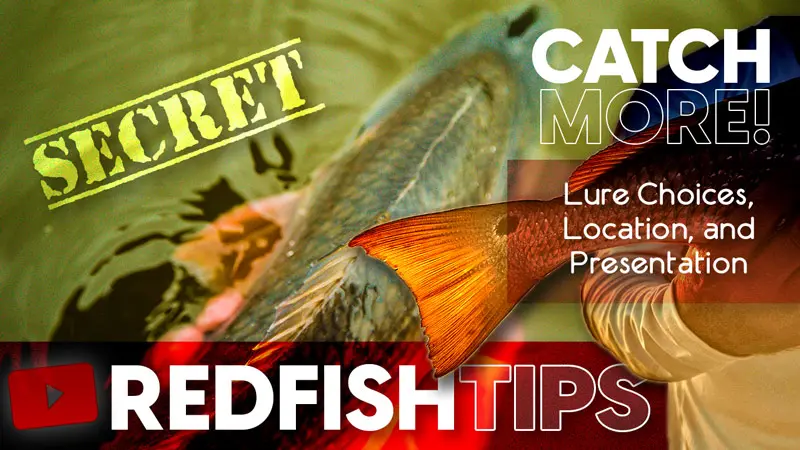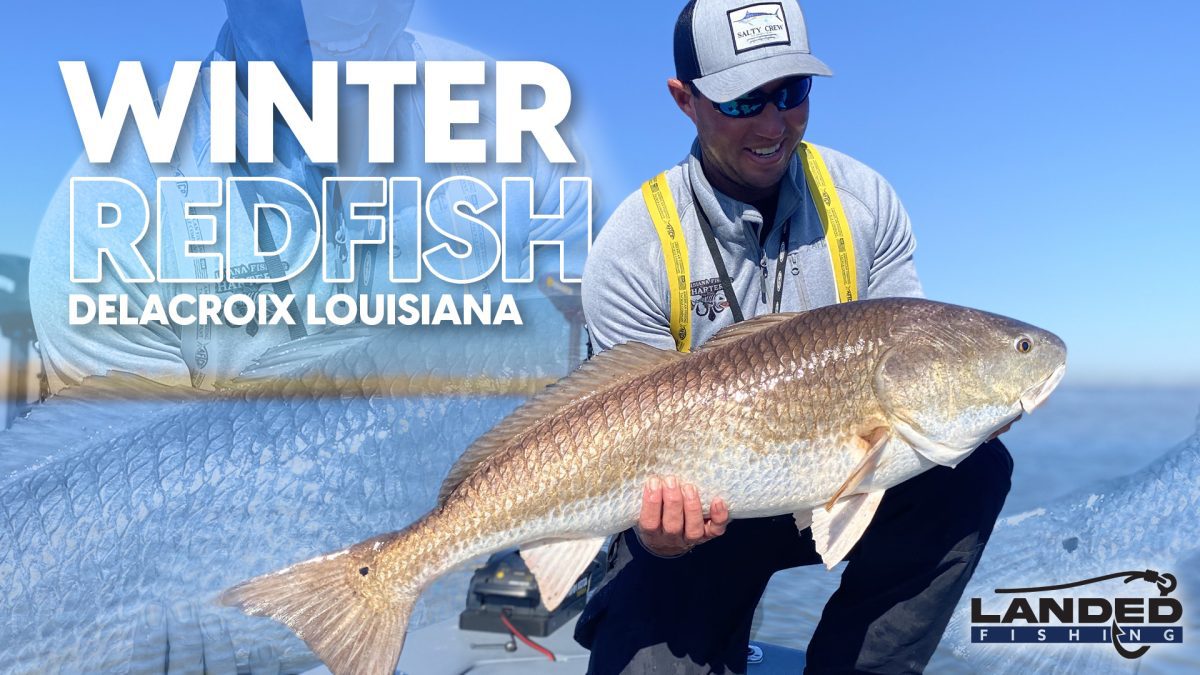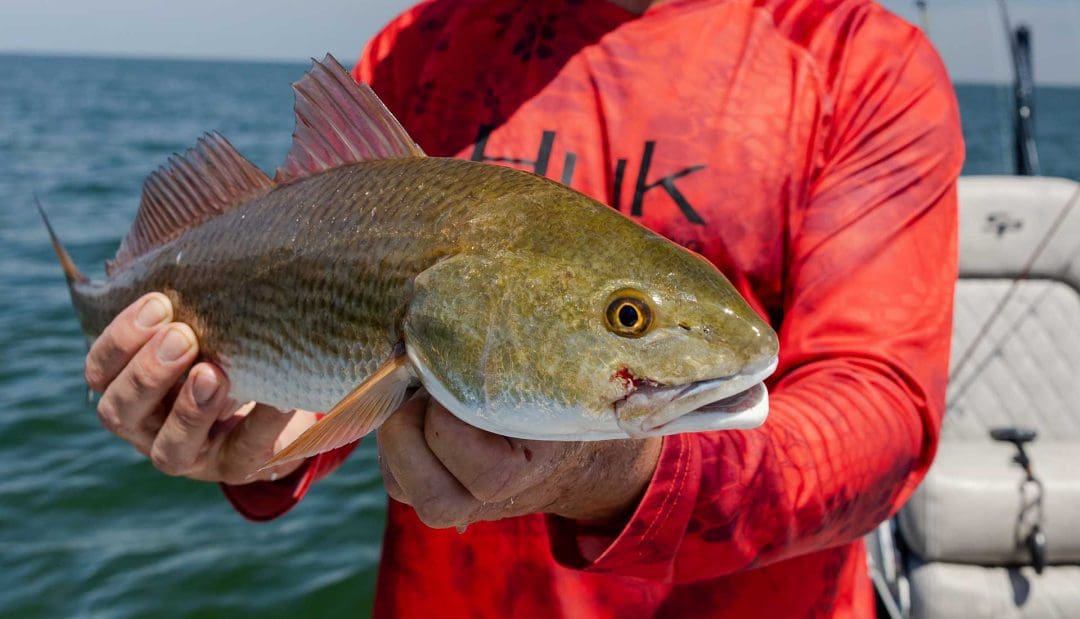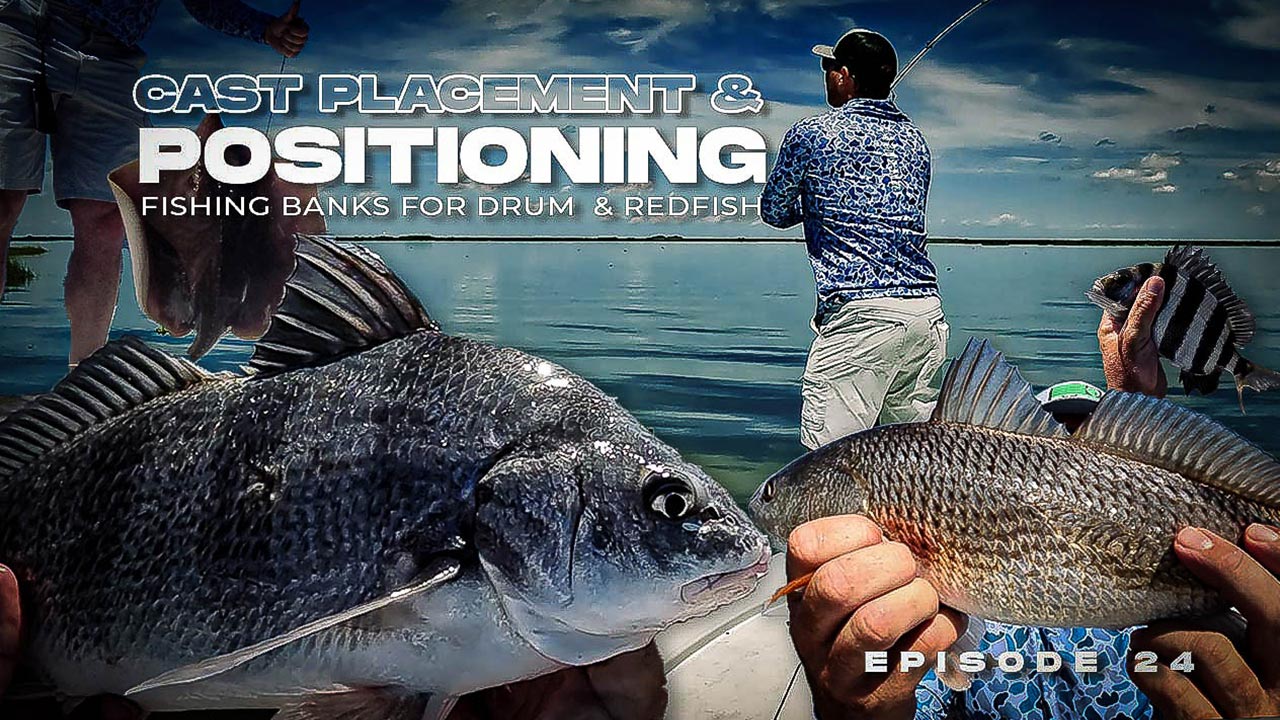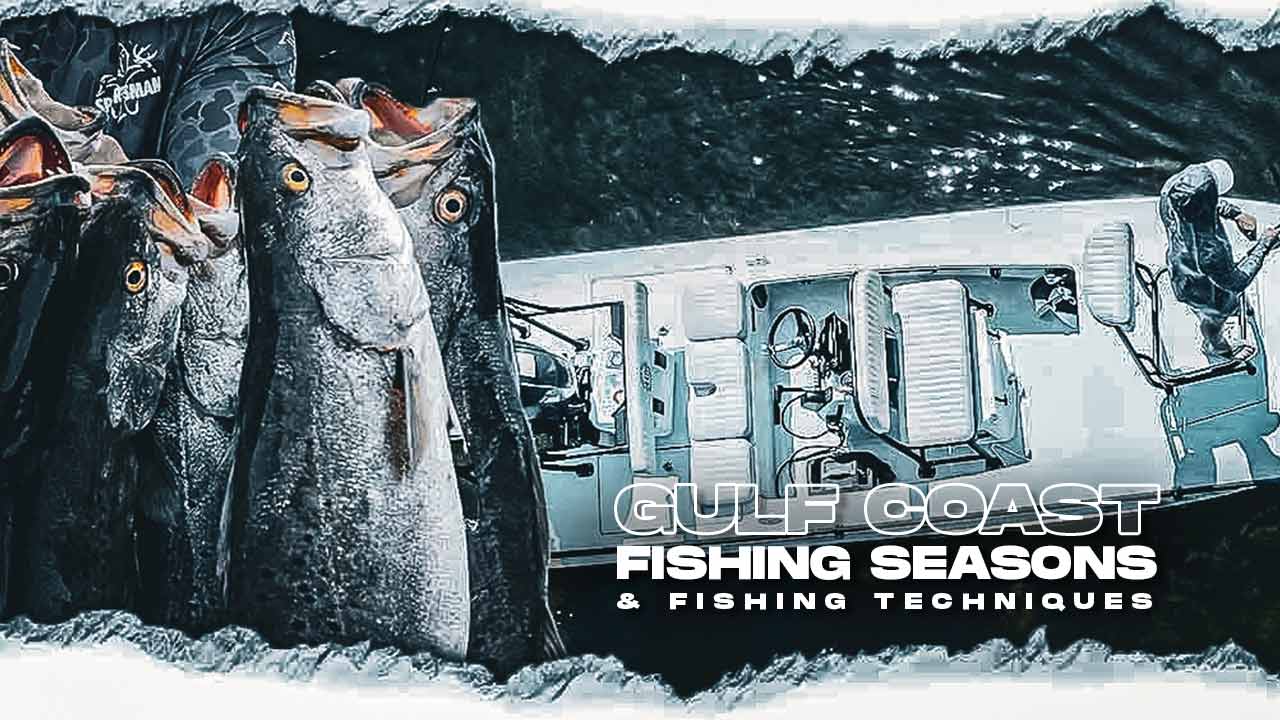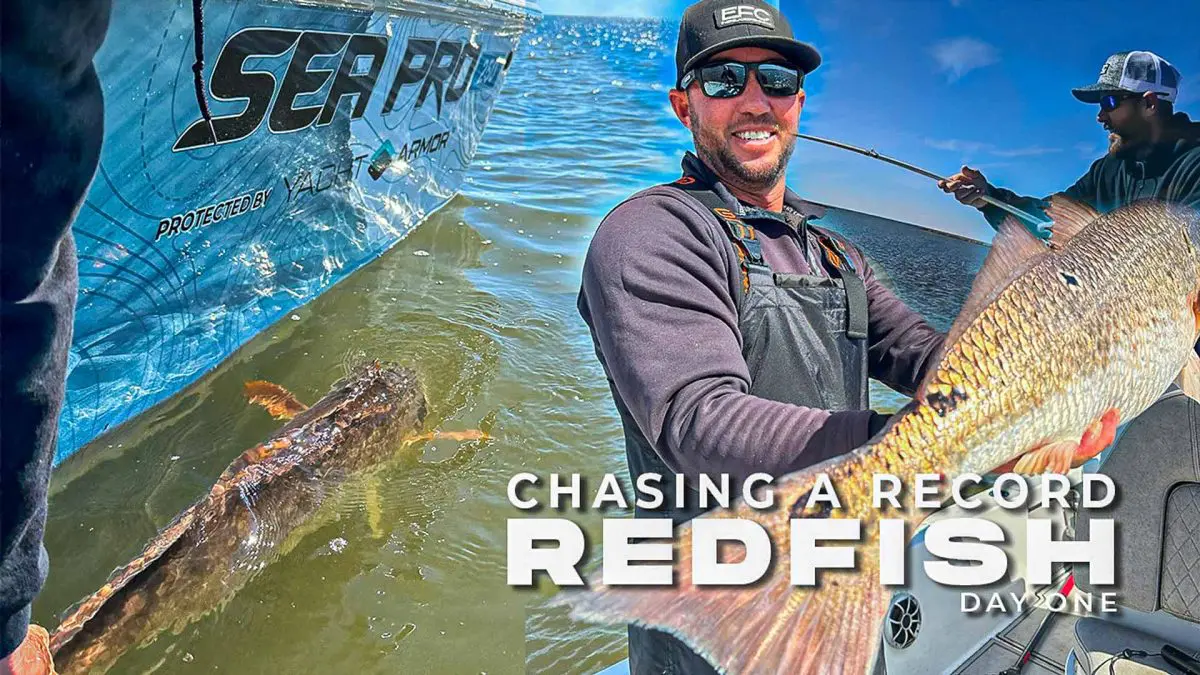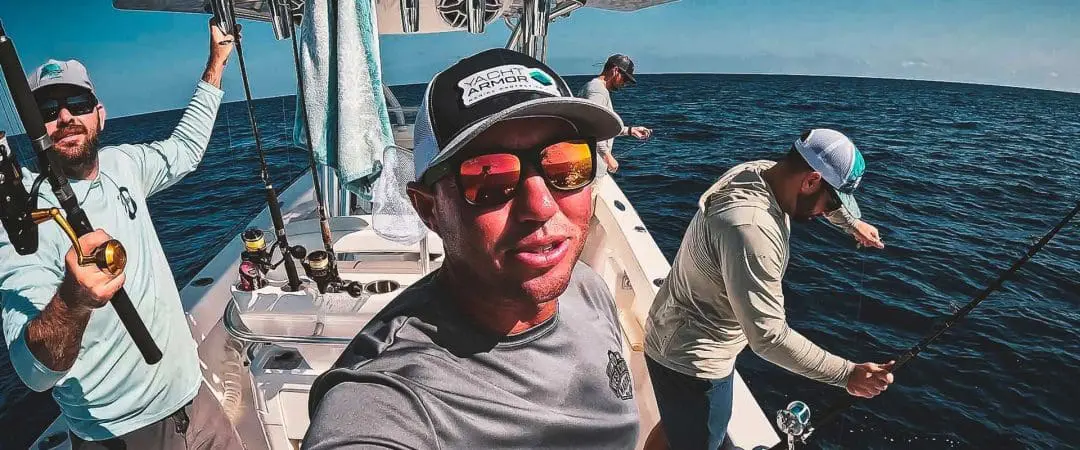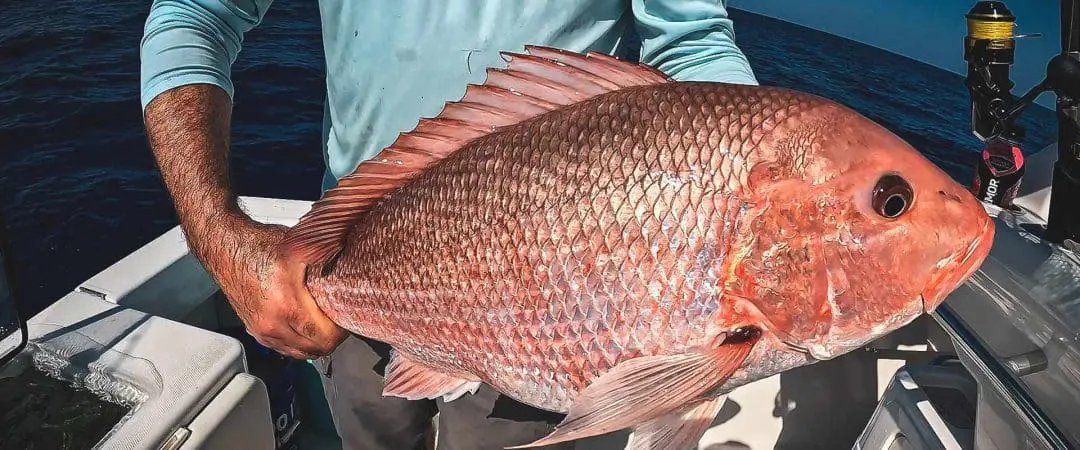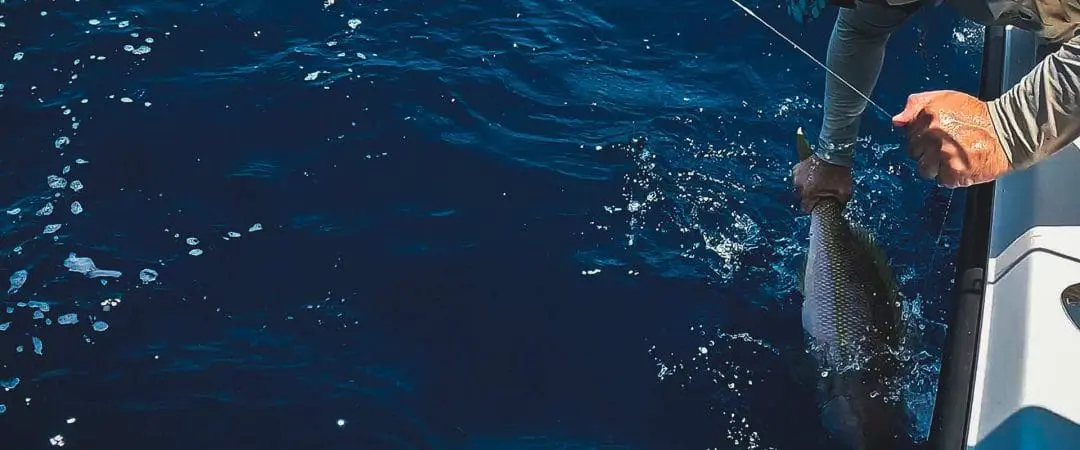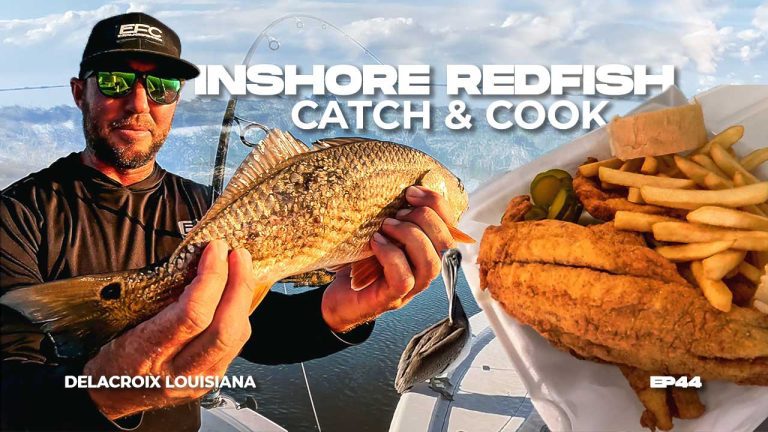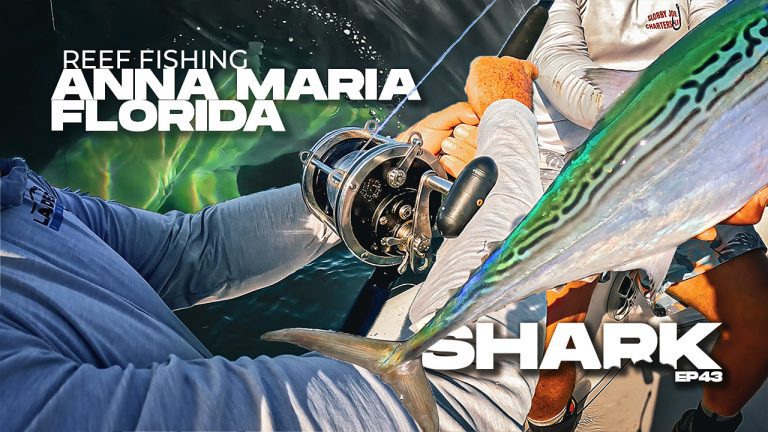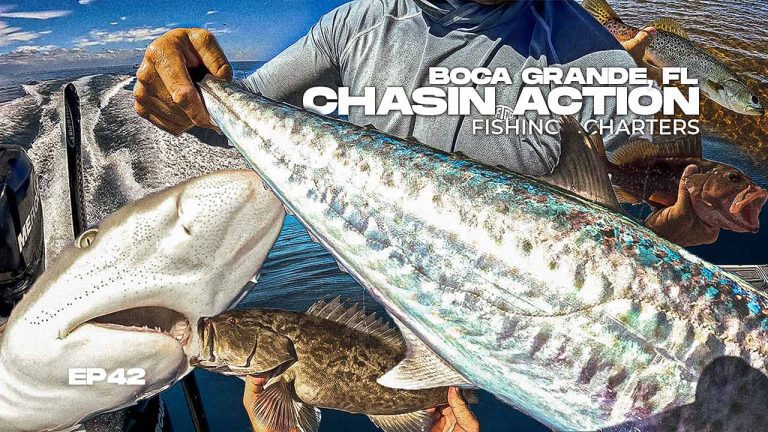Seasonal Fishing Patterns of Inshore Saltwater Fish:
Redfish, Trout, Snook and Sheepshead
Inshore saltwater fishing is a lot of fun, but understanding the seasonal patterns of the target species becomes pivotal for success.
Watch Video: Catching Fish in the Fall
Redfish • Trout • Snook
Behavioral changes that occur with fish throughout the year, anglers can adjust their fishing strategies and increase chances of landing that next catch.
Guides for Catching Saltwater Fish: Species
Catching Redfish: Seasonal Patterns
Catching Spring Redfish
Spring Redfish in Shallow Flats
As the temperatures rise, Redfish become more active. During spring, they engage in spawning activities and display aggressive feeding behaviors. Anglers should focus their efforts on shallow flats and grass beds where Redfish seek out crustaceans and baitfish.
Summer Redfish
Warm Weather Fishing Tactics
In the summer months, Redfish tend to be more active during the cooler parts of the day, such as early mornings and late evenings. They seek relief from the heat by moving to deeper, shaded areas. Anglers should target structures and areas with good water flow.
Fall Redfish
Marsh Magic: Targeting Redfish in Estuaries during Fall
Fall brings a migratory behavior for Redfish as they move from open water to estuaries and marshes. This season is marked by aggressive feeding and the formation of large schools. Anglers should look for baitfish schools and focus their efforts around oyster bars and structure.
Winter Redfish: Slowing Down
Winter Tactics
With lower water temperatures, Redfish exhibit a slower metabolism and reduced feeding activity. Anglers should concentrate their efforts on deep holes, channels, and areas with structures where Redfish seek shelter from the cold.
Catching Trout: Seasonal Patterns
Spring Trout: Transition Time
Grass Flats Delight: Spring Strategies for Trout Anglers
During spring, Trout transition from their winter patterns. They move from deeper areas to shallower grass flats and oyster bars, actively feeding on shrimp and small baitfish. Anglers should focus on these areas using live or artificial baits.
Prime Time for Summer Trout Fishing
Strategies for Summer Trout Anglers
In summer, Trout tend to feed during the cooler parts of the day—early mornings and late evenings. They seek out cooler, deeper waters near structures such as docks or bridges. Anglers should adjust their fishing times and target these areas.
Fall Trout : Feeding Frenzy
Structure Secrets: Targeting Trout around Oyster Beds
Fall is a time of aggressive feeding for Trout as they prepare for winter. They actively pursue baitfish near structures such as oyster beds and bridge pilings. Anglers should focus their efforts around these areas using live bait or lures that mimic baitfish.
Winter Trout: Sluggish and Deep
Winter Tactics: Cracking the Code for Coldwater Trout
During winter, Trout experience a slowdown in their metabolism and become less active. They seek shelter in deeper holes, channels, and areas with structure where they can find warmer water. Anglers should focus their efforts on these areas using slow-moving baits or jigs.
Catching Sheepshead: Seasonal Patterns
Spring Sheepshead: Spawning and Structure
Dockside Delights: Unlocking Sheepshead Secrets in Spring
Spring marks the spawning season for Sheepshead, and they exhibit aggressive feeding behaviors during this time. Anglers should target shallow structures such as docks, pilings, and rock piles where Sheepshead congregate to spawn and feed on crustaceans.
Summer Sheepshead: Beat the Heat
Early Birds Rejoice: The Summer Sheepshead Bite
In the summer months, Sheepshead are more active during the cooler parts of the day. Early morning and evening bites tend to be more productive. They seek relief from the heat by moving to deeper waters with better water flow. Anglers should focus on these areas near structure.
Fall Sheepshead: Preparing for Winter
Structure Secrets: Key to Fall Sheepshead Fishing
Fall is a crucial time for Sheepshead as they feed heavily to build up energy reserves for the winter. They are commonly found around oyster beds, bridge pilings, and other structures. Anglers should target these areas using fiddler crabs, barnacles, or shrimp as bait.
Winter Sheepshead: Slow and Deep
Deep and Stealthy: Strategies for Winter Sheepshead Fishing
During winter, Sheepshead become less active and exhibit a slower metabolism. They seek shelter in deep holes, channels, and areas with structure. Anglers should focus their efforts on these areas using slow presentations and bait such as fiddler crabs or sand fleas.
Understanding the seasonal patterns of Redfish, Trout, and Sheepshead is vital for successful inshore saltwater fishing. By recognizing the behaviors and preferences of these species throughout the year, anglers can adapt their strategies, choose appropriate locations, and select the right bait.
Best Inshore Fishing Times of the Year (By Species)
Gulf of Mexico:
Inshore Fish Species
Discover the excitement of fishing the Gulf of Mexico from the Inshore Side
Learn More: Gulf of Mexico Inshore Fishing
A Guide to the Best Fishing Times for Different Species
Best times of the Year to Fish the Gulf of Mexico
If you’re an avid angler, you know that catching a fish is more than just luck. It takes strategy, patience, and timing to reel in that perfect catch. And one of the most important factors that can greatly affect your success is knowing the best time to fish the Gulf of Mexico seasonally.
Whether you’re targeting redfish, cobia, mahi, or any other popular game fish, understanding their seasonal habits and behaviors can make all the difference in the world.
So, if you want to increase your chances of a successful fishing trip, it’s time to learn how to fish smarter, not harder. Let’s dive in and explore the best times to fish for various species throughout the year.
By Species: Best Times to Fish (by Species) in the Gulf of Mexico
It’s always best to check with local fishing guides or experts for the most up-to-date and accurate information.
January Fishing
Sheepshead are a great choice for anglers in January, with black drum and redfish also providing a good catch. However, for the best chance of success, you should target sea trout. They’re known to be more active during this time, making them easier to catch. Fishing in shallow waters is also recommended.
| Fish | Good | Better | Best |
|---|---|---|---|
| Sheepshead | X | ||
| Black Drum | X | X | |
| Redfish | X | X | |
| Sea Trout | X | X |
February Fishing
Similar to January, sheepshead, black drum, and redfish are a good catch for February. Sea trout (white trout and speckled trout) is the best target species for this month. They’re known to gather in large schools, making it easier to catch them. Look for them in shallow waters, near grass beds or oyster bars.
| Fish | Good | Better | Best |
|---|---|---|---|
| Sheepshead | X | ||
| Black Drum | X | X | |
| Redfish | X | X | |
| Sea Trout | X | X |
March Fishing
March is a great time to target sheepshead and redfish, with black drum and trout also providing a good catch. For the best chance of success, you should try your luck at catching cobia and tarpon. They start to migrate inshore during this time, making them more accessible to anglers.
| Fish | Good | Better | Best |
|---|---|---|---|
| Sheepshead | X | ||
| Black Drum | X | ||
| Redfish | X | X | |
| Sea Trout | X | ||
| Cobia | X | ||
| Tarpon | X |
April Fishing
Redfish and trout are good throughout April, but if you want to increase your chances of success, you should target cobia and tarpon. Mahi are also known to be a great catch during this month. It’s best to fish in deeper waters, near structures or wrecks.
| Fish | Good | Better | Best |
|---|---|---|---|
| Redfish | X | X | |
| Sea Trout | X | X | |
| Cobia | X | X | |
| Tarpon | X | X | |
| Mahi | X |
May Fishing
Redfish and Speckled Trout are still a good catch in May, but the best targets for this month are cobia and tarpon. Mahi and swordfish are also good choices. Fishing offshore is recommended for the best chance of success, especially around weed lines or floating debris.
| Fish | Good | Better | Best |
|---|---|---|---|
| Redfish | X | X | |
| Sea Trout | X | X | |
| Cobia | X | X | |
| Tarpon | X | X | |
| Mahi | X | X | |
| Swordfish | X |
June Fishing
In June, tarpon are a good target species, with cobia and mahi also providing a good catch. Swordfish and sailfish are the best options for this month. Fishing in deeper offshore waters is recommended, as they tend to be more active in these areas.
| Fish | Good | Better | Best |
|---|---|---|---|
| Tarpon | X | ||
| Cobia | X | X | |
| Mahi | X | ||
| Swordfish | X | ||
| Sailfish | X |
November Fishing
Sheepshead and redfish are a good catch in November, with black drum and sea trout also providing a good catch. Cobia and tarpon are the best targets for this month. Fishing in deeper waters, near wrecks or artificial reefs is recommended.
| Fish | Good | Better | Best |
|---|---|---|---|
| Sheepshead | X | ||
| Black Drum | X | ||
| Redfish | X | X | |
| Sea Trout | X | ||
| Cobia | X | X | |
| Tarpon | X | X |
December Fishing
Sheepshead are still a great catch in December, with black drum and redfish also providing a good catch. Sea trout is the best target species for this month. Fishing in shallow waters, near structures or oyster bars is recommended for the best chance of success.
| Fish | Good | Better | Best |
|---|---|---|---|
| Sheepshead | X | ||
| Black Drum | X | X | |
| Redfish | X | ||
| Sea Trout | X | X |
To be used as a general guideline: There are many factors that can affect fishing such as weather conditions, tides, and location.


